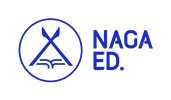LEAP Kiphire: Baseline Report
Category: Project Report
Topic: LEAP Kiphire: Baseline Report
Name of Report: Innovating Education in Kiphire: Bridging Gaps with Digital Solution
Date of Publication: 20/09/2024
The LEAP Baseline Report marks a critical first step in understanding the real-world challenges and opportunities of digital education in frontier districts like Kiphire, Nagaland. Conducted as part of the Learning Enhancement and Accessibility Project (LEAP), this report captures voices from students, teachers, and administrators across 15 schools — providing data-backed insights that inform sustainable education reform.
Digital Divide is Deep: 36% of government school students lack personal devices, and 53% of schools have no internet connectivity.
High Enthusiasm, Low Access: 90% of students believe digital tools improve learning, yet only 15% own a device.
Teachers Are Willing but Underequipped: While 98.7% of teachers feel confident using tech, 75% have received no formal training.
Infrastructure Bottlenecks: Poor power supply, outdated tech, and limited connectivity are major implementation hurdles.
Blended Learning is the Way Forward: A mix of traditional and digital teaching is best suited for Kiphire’s context.
After-School Duties Impact Learning: 63% of students are occupied with chores, limiting their access to homework or digital sessions.
Student Digital Education Perspectives Survey
433 students (grades 9 & 10) surveyed
Found 66.5% were worried about internet/device access
73% are motivated to learn digitally, despite constraints
Teacher Survey
75 teachers across 14 schools
77% eager to use digital tools, but 75% lacked training
53% cited lack of devices; 52% cited poor connectivity
School Infrastructure Survey
15 schools assessed (govt. & private)
Found major power/internet reliability gaps
Only 13% of schools had both projector and screen
Device Access: Just 15.2% of students own a device; many rely on family phones
Internet Quality: Only 33% of schools have reliable daily internet access
Power Supply: 20% of schools report inconsistent electricity
Training Deficit: Most teachers confident with tech but not trained pedagogically
LMS Awareness Gap: Only 53% of schools understood LMS potential
Bridge the Digital Divide:
Implement targeted device distribution, set up device banks, and improve school tech access.
Empower Teachers with Training:
Provide contextualised professional development on apps, LMS use, and content creation.
Invest in Infrastructure:
Ensure reliable power, internet access, and necessary classroom tech (e.g. screens, routers).
Explore Digital Tools Thoughtfully:
Encourage use of educational apps, gamified tools, and local language content.
Adopt Blended Learning:
Combine digital with textbook-based learning for inclusion and adaptability.
Leverage Enthusiasm:
Students are motivated — design content and rollout plans around this enthusiasm.
Account for After-School Duties:
Build flexibility into learning models to accommodate chores and tuition schedules.
Use this baseline to inform Year 2 implementation of LEAP (2024–2025)
Focus on differentiated strategies for govt. vs private school contexts
Expand device access, teacher training, and LMS onboarding
Monitor impact using quarterly school-level data reviews
Deepen community involvement in digital rollout and evaluation
